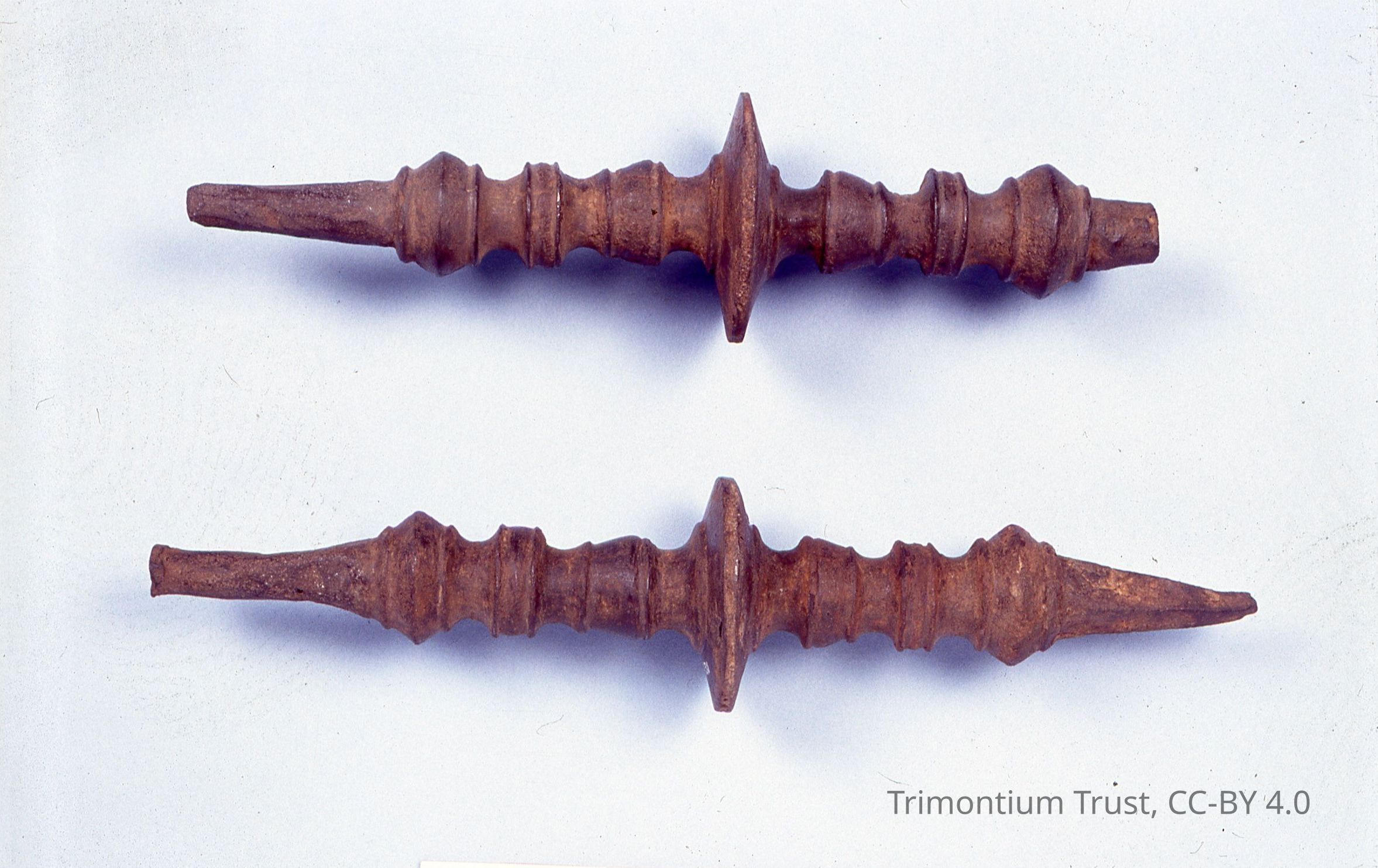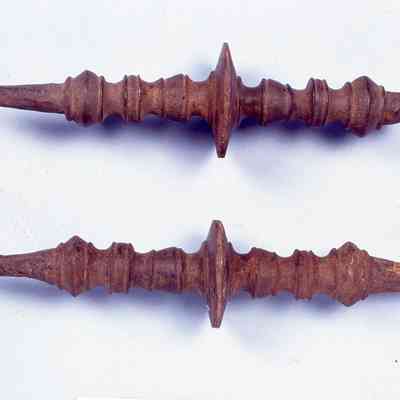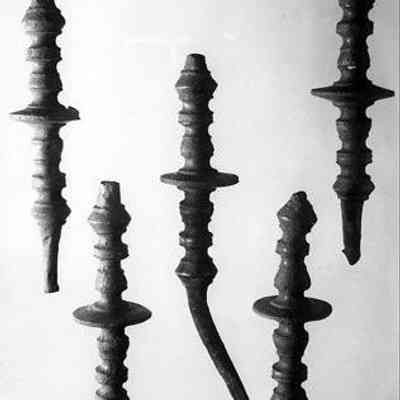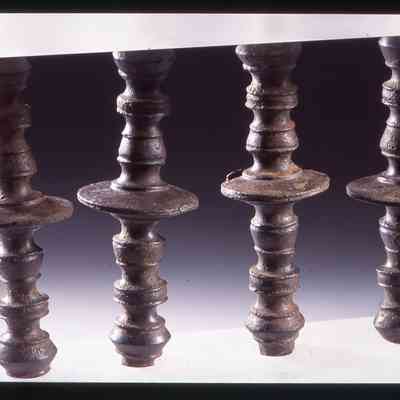Cabinet / grille rod / iron rods
Name/Title
Cabinet / grille rod / iron rodsEntry/Object ID
X.FRA 311Description
Five rods of forged iron, pieces of a furniture piece, either a grille from an ornate wooden cabinet or from a seat.From the Roman site at Newstead (Trimontium), Roxburghshire, 80 - 180 AD. They are designed to look like turned woodwork. They have mouldings expanding at a central point into a larger disc. All are broken and incomplete.Use
Used for decoration, and practically to help keep the cabinet together.Context
Found at Trimontium in Pit XVI. Usually all that survives of Roman furniture are the metal rods or fittings. Complete examples from Herculaneum in Italy, together with some pictures and surviving wooden fragments, show that the Romans used chairs, tables, couches, beds and chests.Collection
National Museums ScotlandCategory
Furniture
Acquisition
Accession
X.FRA 311Source (if not Accessioned)
National Museums of ScotlandMade/Created
Date made
80 - 180Time Period
1st - 2nd centuryEthnography
Cultural Region
Continent
EuropeCulture/Tribe
Roman



